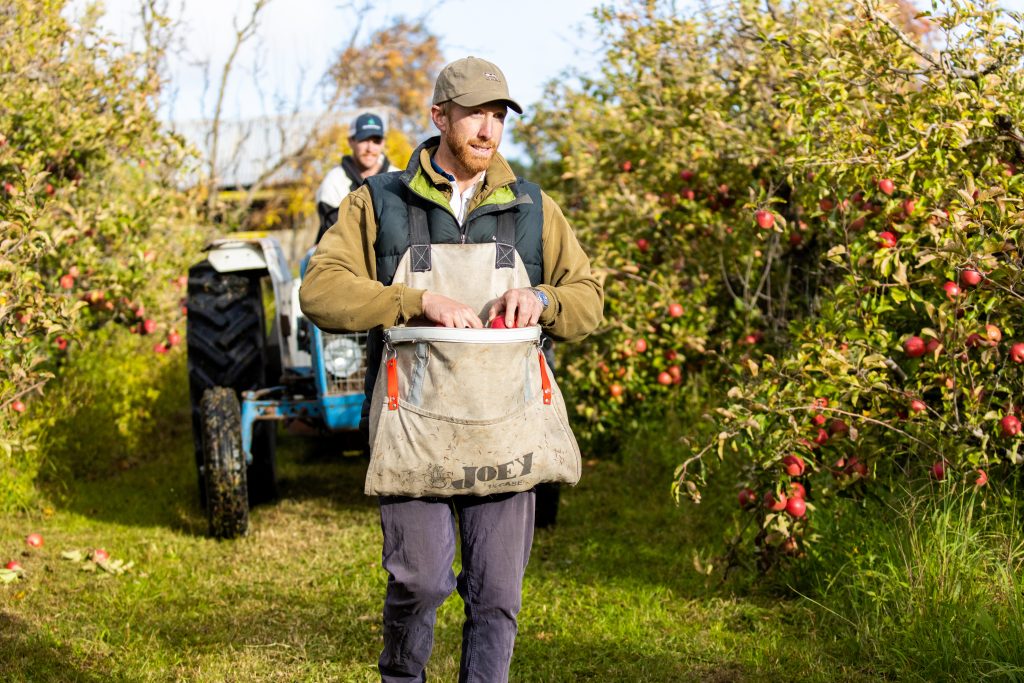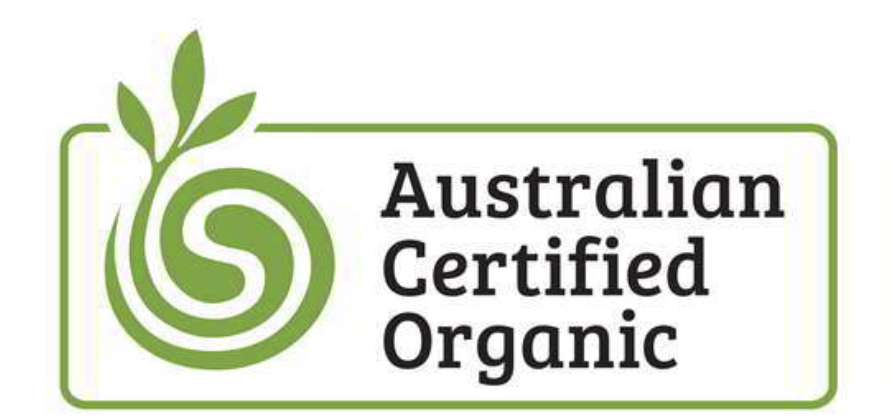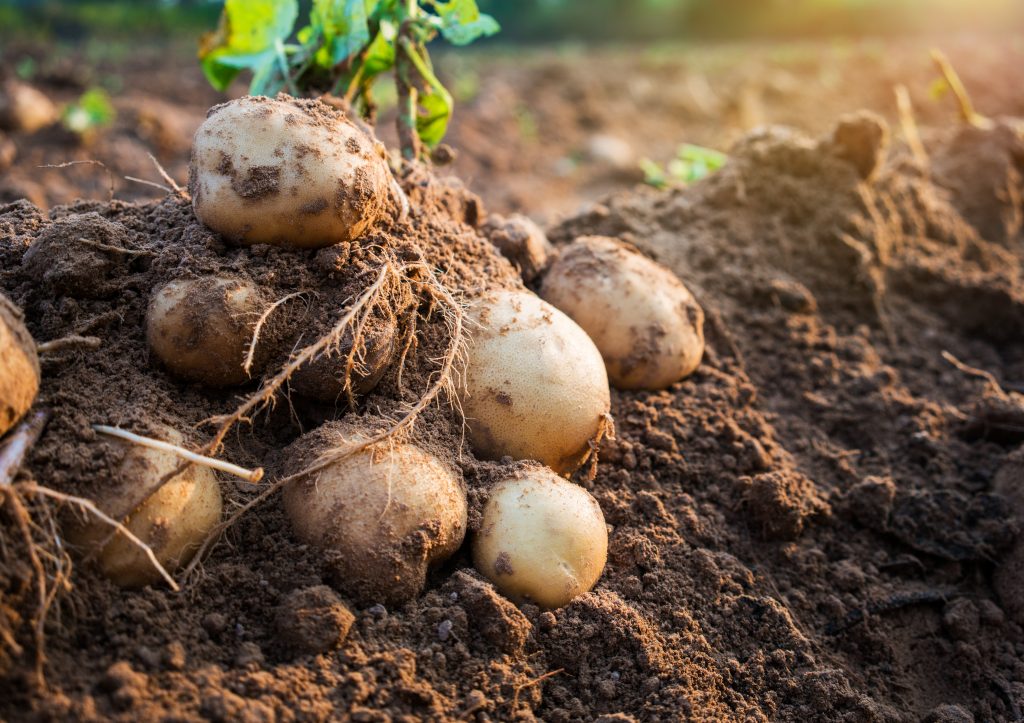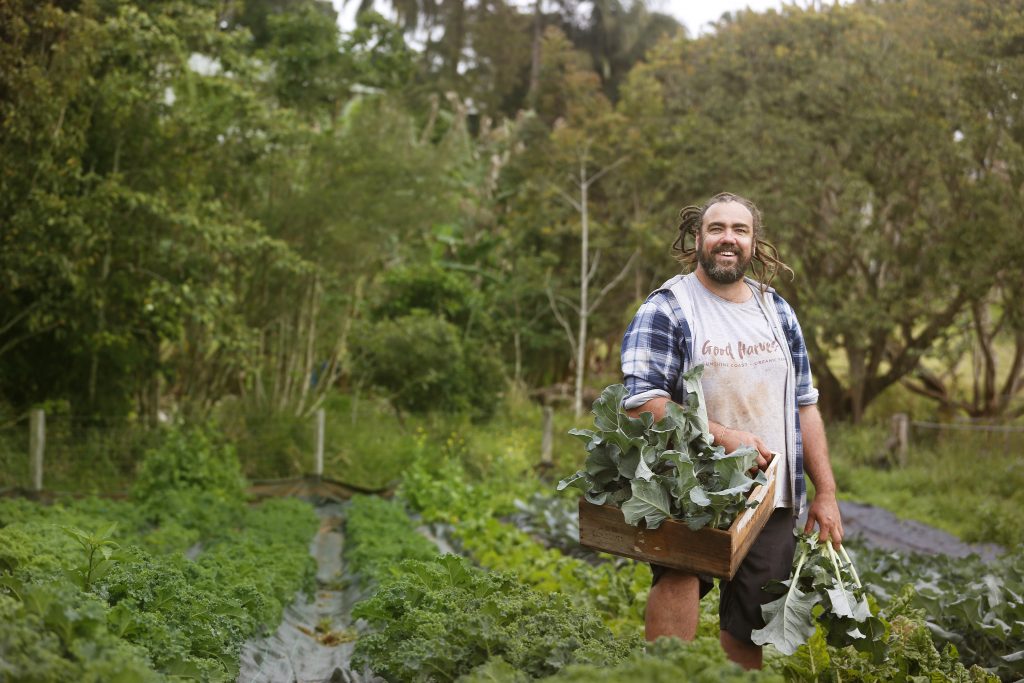Ever bought organic food at the supermarket and wondered what exactly makes that food or wine different? Why it costs more? What standards apply to growing organic food? Australian Farmers caught up with Josefine Pettersson, technical Officer from Australian Organic Limited to find out.

Firstly, can you explain what being certified organic means?
Ultimately being certified organic is working with nature. As an industry we cannot patent a lot of practices as they are often just common sense and considered good management, such as promoting beneficials (natural predators such as parasitic wasps and ladybeetles), increasing soil health and strategically reducing the need for chemical inputs to control pest and disease.
With livestock, it’s moving your animals frequently and having sheep and cattle suited to that region. With chickens and pork everything needs to be free range and allow for natural behaviour of those animals. Pastured is best, but there are some limitations in Australia, such as we need to protect chickens from eagles and ensure that in times of drought the animals aren’t degrading the land.
Animal welfare is a priority so there’s things like minimum indoor and outdoor requirements and space for the livestock to roam.
With vegetables it means no synthetic nitrogen, as studies show it decreases soil organic matter and reduce the soil microbiome (like your gut) which are both key to healthy plants. If you do require some type of inputs, they are from natural sources.
Certified organic farms are also required to allocate 5% of their land to biodiversity or natural plantings to support local ecosystem services.
Certified organic also includes the production and processing stage to ensure consumers are getting the best version of that food. The goal for organic products is for consumers to be able to read and understand the ingredients list, without unpronounceable words and secret numbered chemical additives.

Do certified organic foods still use fertilisers and pesticides? Does livestock receive medicinal treatment?
With livestock a lot of producers are having issues with all the rain we’ve had, especially sheep with internal parasites. Farmers can treat livestock with anthelmintics (veterinary medicine) that means that animals are no longer classed as organic, but depending on the situation the next generation can still be organic.
With treatment it’s about knowing what you’re dealing with, understanding the lifecycle of the pest.
The focus is always on working towards optimal health of the animal (less likely to get sick), but there are organic drenches and options available. Some producers use a mix of cod liver oil, seaweed and bentonite clay, or natural tannins found in many native plants, pumpkin seeds, or apple cider vinegar. Animals can be bred and selected to build up parasite resistance and all producers should be rotating the paddocks they use, as organic or not, every time you bring sheep in for treatment, it costs money, so it’s good livestock. management across the board.
A certified organic vegetable grower applies compost to his farm, but this is normally only possible in horticulture and not larger cropping farms as it’s too expensive to do annually. Incorporating green manure during or between your crop rotations, where water is sufficient, also goes a long way towards encouraging soil health, especially when you can incorporate livestock rotations into this. Yes, it’s a little bit slower growing than direct release synthetic Nitrogen, but you promote a healthy soil microbiome and the increased soil organic matter will hold more water in periods of no rain. Healthy soil equals healthy plants, with the additional benefits of drought resilience, increase pest resilience, a biodiverse ecosystem and in our a reduced need for inputs.
What processes does a farmer have to go through for their produce to become certified organic?
The certification period is between one and three years depending on the previous synthetic fertiliser or pesticide use of the farmer. There’s paperwork the farmer completes before the initial audit, but one year is the minimum time for conversion even if you’ve not used any synthetic fertilisers or chemicals.
To maintain certification, there’s an annual on-site audit for farmers and processors.
The auditor will also look at satellite imagery and it is a requirement they inspect different areas of the property each time. A soil or plant sample is also taken from the farm to make sure it’s certified organic with no residual prohibited chemicals recently used.

How do we know if the product we are buying is in fact organic?
Each certified organic farmer will have a certification number that should be listed alongside their certification logo, such as the Bud logo, when the product is on the supermarket shelf. Consumers can see the farm’s certification number and search it online to trace where the farm is located and who the producer is.
Why does organic food cost more?
It really depends on the industry. When you’re talking beef, 40-60% of non-organic beef has had hormonal growth implants, so the cattle grow 20-30% faster and are culled at a younger age than grassfed, organic cattle. So with certified organic beef, it’s an older animal and it needs a larger area to grow resulting in a higher price.
When talking vegetables, it’s all about starting with healthy soil and seedlings to minimise pest and disease risk. Depending on the size of the farm, the plants might be hand weeded or planted under cotton mats to minimise yield losses to weeds without the need for pesticides. Consumers still crave perfect looking products but organic products may have a few more love bites from insects or sometimes more crop wastage (or green manure) to account for this, however even non-organic farms have this.

From a certified organic grains perspective, a lot of producers are using older varieties with more emphasis on soil roots rather than the crop heads, as the decomposing root structure encourages soil organic matter, whereas modern crop breeding sends more energy into the grain.
This means these older varieties might be lower yielding, but more resilient to drought and boast a higher micronutrient uptake.
Also, because soil fertility is a priority you might be growing green manure crops (crops not harvested but are dug back into the soil to add nutrients or strategically grazed by livestock) between your cash crops. Ultimately there’s still a lot of research that needs to be done on compost and green manure rotations and how they release nitrogen for organic crops, but while yield might be lower, the nutrient value is higher.
Weeds are one of the biggest differentials in certified organics, as every weed takes away energy and water from the crop. There are some great innovations to help address this, but there’s still going to be slightly higher loss due to weed pressure which in non-organic farming is reduced through spraying herbicides.
What are the benefits of buying organic?
Research shows there are numerous health benefits, such as organic grassfed beef has a higher omega 3 and healthier fat profile compared to feedlot beef.
Also, when you go to the supermarket and buy a lettuce you don’t how it’s grown, you don’t have that connection to the farmer or their practices, but with certified organic produce you can find out where it came from and you know no nasties have been used in its production.

Organic food is beneficial to the environment and our health, so why do you think not everyone buys organic?
You vote with your mouth. The biggest reason people don’t buy more organic produce is the price difference. But each time you purchase a certified organic product, you are choosing to support all that it represents. People forget about the environmental externalities associated with agriculture such as chemical runoff, soil erosion, land degradation and more. But more and more research highlights the true economic value of natural capital such as biodiversity, trees and healthy ecosystems and the potential for agriculture to rehabilitate and regenerate land when managed correctly. As such, the European Union has set a goal of converting 25% of the EU’s agricultural land to organic farming by 2030 and actively assisting farmers in the transition. They want the purchase of organic to be a conscious choice, not an economic choice.
How many Australian farms are certified organic?
There’s over 35 million hectares in Australia, the highest certified organic area by country globally and larger than the whole of the UK. What’s interesting is that although we have more than 50% of the certified organic farmland in the world, Australian organic products only represent 1% of the market. Organic market access requires recertification to that specific country’s standard or a government-to-government organic equivalency arrangement and often is not included in a normal free trade agreement. We are working on changing this and increasing market access as it is a current impediment to further growth of the industry; we are an export nation after all.

How has the industry grown and changed?
We release the Australian Organic Market Report every two years, the most recent in 2021. It showed the industry now contributes over $2.2 billion each year to our economy.
It also showed more farms are making the shift with a 38% jump in certified organic operations since 2011 and the demand for organic food growing by 11.8% per year.
The Australian organic industry is committed to playing our part inc contributing to the National agricultural goal of $100 billion farm gate value by 2030.
What’s the future for organic food look like?
Ultimately, the certified organic industry doesn’t want the segregation from non-organic farm products. We want to see people working more with nature, and using less pharmaceuticals, pesticides, and fertilisers because they are optimising the natural resources on their farm. Just because the market access isn’t there at the moment, doesn’t mean there won’t be opportunity going forward as we move towards a more sustainable agricultural framework. We should be working together to better manage animal health, pests and soil fertility, as these impact all farmers, not just one or the other.
To learn more about certified organic food production, the health and environmental benefits and how to become certified organic, visit Australian Organic.







































Thanks for the research.
Thanks for putting the spotlight on the organic industry and it’s contribution to regenerative and sustainable environment practices.
Very informative, thank you very much
Regards hans